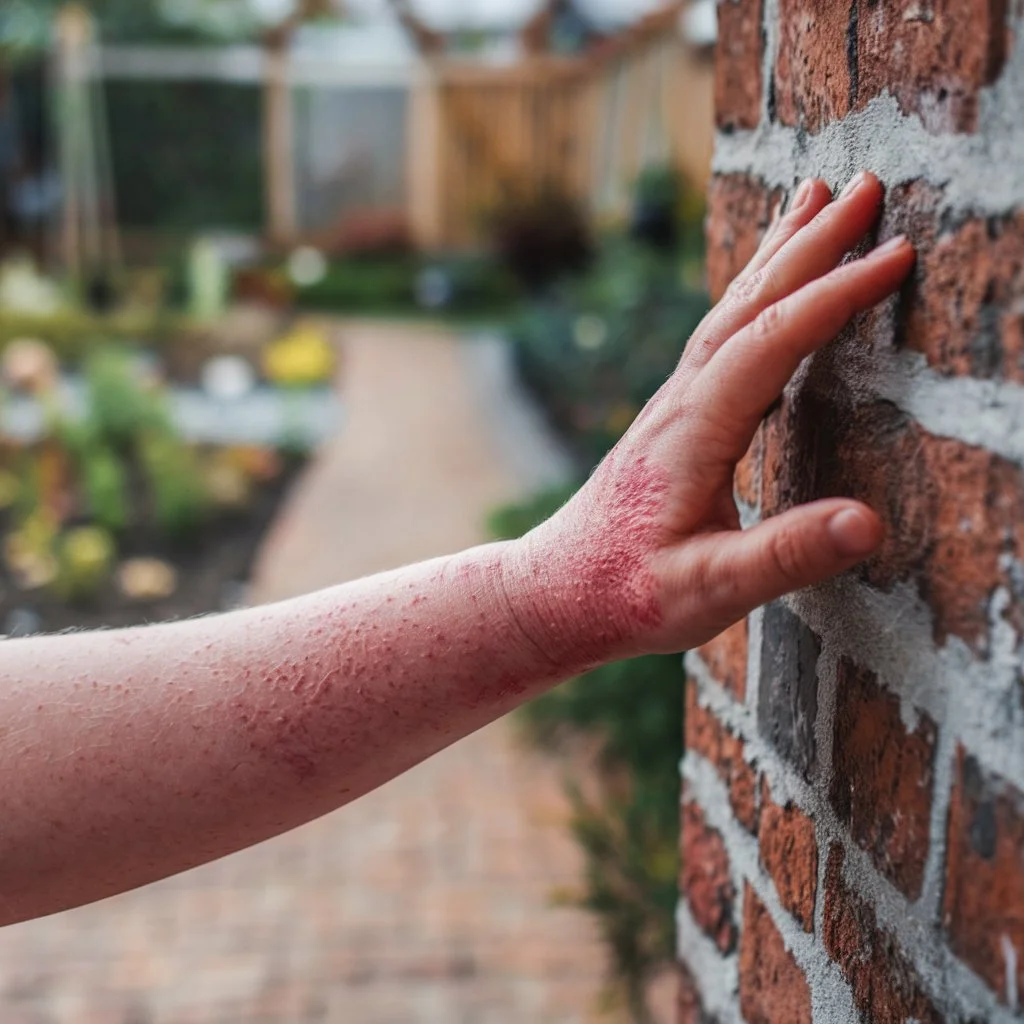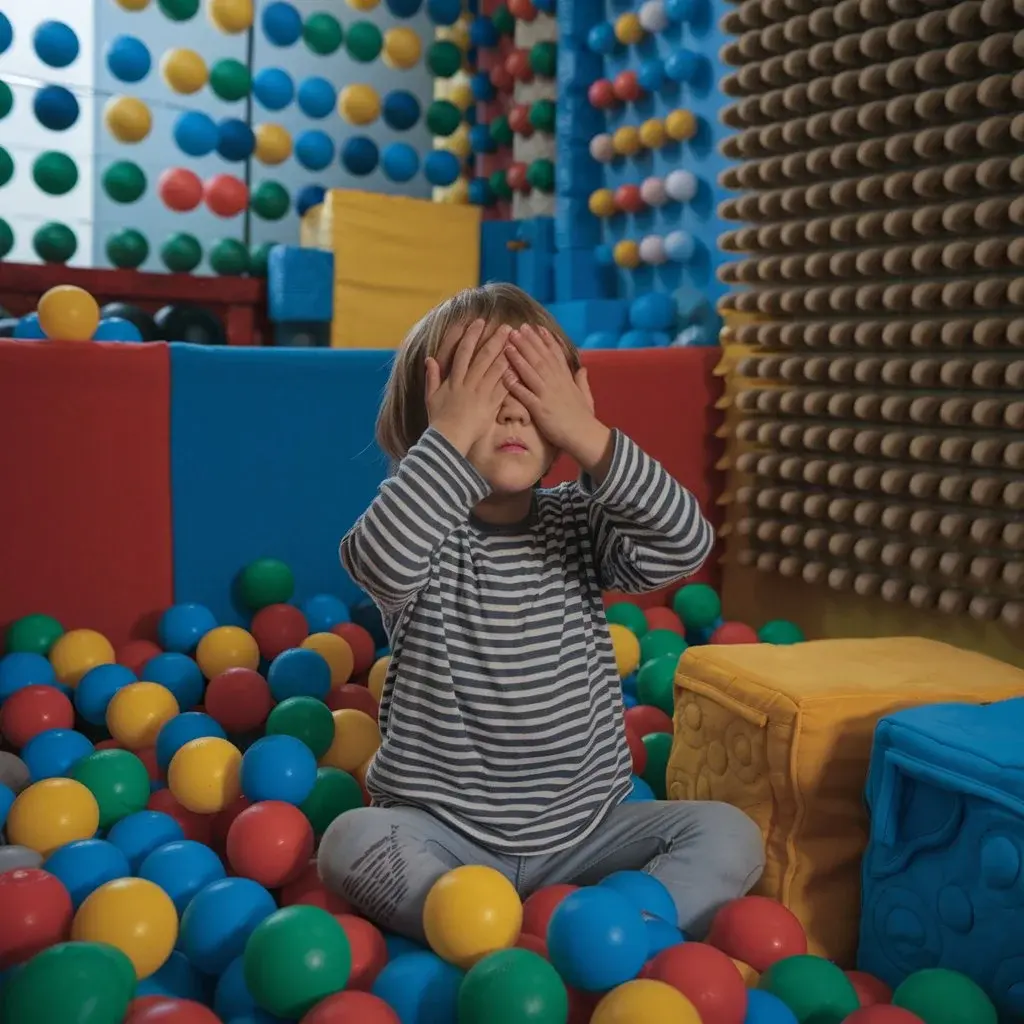Understanding Tactile Defensiveness Autism
Introduction
Autism spectrum ailment (ASD) is a complex neurological circumstance that provides a numerous variety of challenges which includes sensory processing difficulties.
One such undertaking that can extensively affect the day by day lives of individuals with autism is tactile defensiveness.
This heightened sensitivity to certain touch sensations can lead to misery, avoidance and a profound effect on a person’s social, emotional and bodily well being.
Understanding the nature of tactile defensiveness in autism is crucial for presenting powerful aid and interventions.
Permitting those at the spectrum to thrive and participate greater completely in various elements of existence.
Understanding Tactile Defensiveness Autism learn about the causes, symptoms and effective strategies for managing tactile defensiveness in autism to support individuals with heightened touch sensitivity.
What is Tactile Defensiveness?

Tactile defensiveness is a situation where people, specifically people with autism spectrum disease (ASD) experience an excessive and aversive response to certain sensory stimuli particularly contact. This hypersensitive reaction to touch can happen in various approaches from disliking the texture of positive fabrics or textures to recoiling from even the lightest physical touch.
For people with autism tactile defensiveness is often a prominent characteristic of their sensory processing variations. They’ll discover certain textures like the sensation of positive apparel substances to be overwhelming or even painful. Easy acts like hugging, handshaking or having their hair brushed can trigger a robust bad response mainly to distress, anxiety or even competitive behaviors as a way of heading off the unsightly sensory enjoyment.
Not unusual tactile triggers for individuals with autism can consist of:
- Certain garb fabric which includes wool or hard substances
- Uor unwanted physical touch, like mild brushing in opposition to the pores and skin
- Sure personal care activities including hair washing or nail cutting
- Exposure to positive textures like sand, dust, or sticky materials
Knowledge of the basis causes and the specific sensory profiles of these with tactile defensiveness is essential in imparting effective support and intervention.
Physiological and Neurological Basis:
The experience of touch is mediated by means of a complicated community of specialized receptors and neural pathways inside the body. In people with autism studies suggest that there can be variations in the manner the brain approaches and interprets these tactile sensations leading to a hypersensitive or protecting reaction. This neurological distinction can be encouraged by way of factors consisting of man or woman versions co going on situations and developmental degree.
Implications for Individuals with Autism:
Tactile defensiveness could have a profound impact on the everyday lives of individuals with autism. It is able to interfere with crucial self care sports along with grooming and dressing. In addition to social interactions that contain touch like hugging or handshaking. This heightened sensitivity can also lead to emotional misery, anxiety and problems in navigating sensory wealthy environments.
Causes of Tactile Defensiveness in Autism
The underlying causes of tactile defensiveness in autism are complex and now not but fully understood. Researchers have recognized several capacity contributing elements:
Sensory Processing Challenges:
Individuals with autism frequently revel in demanding situations within the way their brains method and integrate sensory data which includes contact. This will lead to a heightened sensitivity or aversion to sure tactile stimuli as the brain struggles to interpret and respond to these sensations appropriately.
Neurological Differences:
Rising research suggests that there may be precise neurological variations in the manner the mind procedures and responds to touch in people with autism. These variations can be encouraged through elements inclusive of brain structure, neurotransmitter degrees and neural connectivity.
Individual Variations and Co occurring Conditions:
The severity and expression of tactile defensiveness can vary greatly among individuals with autism. Co going on situations which include anxiety, sensory processing disease or different neurological differences also can contribute to the depth of tactile sensitivity.
Developmental Factors:
Tactile defensiveness can manifest differently at specific stages of a man or woman’s development. As an example young children with autism might also exhibit more overt aversions to touch. While older people can also develop coping strategies or learn how to better control their sensory demanding situations.
Anxiety and Hyperarousal:
In addition to the neurological factors, the experience of tactile defensiveness also can be exacerbated via heightened levels of tension and physiological arousal. Individuals with autism regularly battle with tension and the anticipation of unpleasant sensory reports can cause a state of hyperarousal further intensifying their aversive reactions.
Identifying Tactile Defensiveness in Individuals with Autism
Recognizing the symptoms of tactile defensiveness in individuals with autism is the first step in presenting appropriate guidance and interventions. A few not unusual behaviors which could suggest tactile defensiveness consist of:
- Avoidance or dislike of sure textures, fabrics or substances
- Discomfort or misery while touched even in a mild or gentle manner
- Terrible reactions to certain grooming activities together with haircuts or enamel brushing
- Desire for firm deep stress contact over light contact
- Difficulty with certain social interactions that involve contact which include hugging or handshaking
Early identity and assessment of tactile defensiveness are vital as they can inform the improvement of effective coping strategies and interventions. Professionals which includes occupational therapists and sensory integration professionals use a spread of evaluation equipment and observation methods to evaluate a man or woman’s tactile processing and sensitivity.
Coping Strategies and Interventions of Tactile Defensiveness Autism
Addressing tactile defensiveness in people with autism requires a multifaceted technique that entails a mixture of healing procedures, environmental adjustments and specialized strategies. A few powerful strategies and interventions include:
Sensory Integration Therapy:
Occupational therapists who specialize in sensory integration can work with people to assist them with higher systems and reply to tactile stimuli. This can involve activities that gradually expose the individual to distinct textures and sensations helping to desensitize and enhance their tolerance.
Sensory Friendly Accommodations:
Creating a sensory pleasant environment which includes providing smooth, comfy garb using textured toys or fidgets and adjusting lighting and noise degrees. It can assist minimize the effect of tactile defensiveness and promote a calmer more cozy revel in.
Gradual Exposure and Desensitization:
Slowly and methodically exposing people to touch sensations they discover challenges even as offering aid and coping techniques. It can help them construct tolerance and decrease their aversion through the years.
Deep Pressure Touch and Proprioceptive Input:
strategies that offer deep stress contact or proprioceptive input which includes weighted blankets, compression vests or joint compression may have a relaxing effect and help alter the person’s sensory machine.
Multidisciplinary Collaboration:
A collaborative approach related to dad and mom, educators, occupational therapists and other specialists is critical for growing and enforcing powerful techniques to address tactile defensiveness in individuals with autism.
Impact of Tactile Defensiveness Autism on Daily Life

Tactile defensiveness could have a significant effect on the day by day lives of people with autism affecting diverse factors of their functioning and proper being.
Self Care and Clothing Challenges:
One of the most outstanding demanding situations is the difficulty with self care sports which include brushing enamel, washing hair, or getting dressed. The aversive reaction to certain textures or the discomfort of positive clothing substances could make these simple tasks extremely distressing and cause big resistance or avoidance.
Social Interactions and Relationships:
Tactile defensiveness can also intrude with social interactions and the development of meaningful relationships. People may also avoid or come to be hectic in conditions that involve physical contact which include handshakes, hugs or even unintended brushing against others. Which can negatively affect their social competencies and social emotional development.
Emotional Regulation and Behavior:
The intense sensory revel in tactile defensiveness can also contribute to challenges with emotional law and behavior. People may experience heightened ranges of tension, frustration or maybe aggression while confronted with triggering tactile stimuli leading to meltdowns or other disruptive behaviors.
Understanding the profound effect of tactile defensiveness on an individual’s daily life is essential in supplying complete assistance and fostering an environment that respects and incorporates their specific sensory needs.
Supporting Individuals with Autism and Tactile Defensiveness
Imparting comprehensive help for individuals with autism and tactile defensiveness calls for a holistic and compassionate technique. Family participants, caregivers and educators play an essential function in developing a nurturing and expertise surroundings that respects the person’s sensory wishes.
Accommodations and Modifications:
Incorporating sensory pleasant hotels and adjustments in educational, social and home environments can assist mitigate the demanding situations related to tactile defensiveness and sell an extra inclusive and supportive experience. This can encompass presenting alternative garb alternatives. The use of textured or fidget toys and adjusting the physical environment to decrease overwhelming sensory inputs.
Educating and Advocating:
Raising cognizance approximately tactile defensiveness and its impact on people with autism is essential. By educating our own family individuals, educators and the wider community we are able to foster a more understanding and compassion for those stricken by this sensory processing assignment. This will involve sharing data supplying training and advocating for the desires of these with tactile defensiveness.
Case Study: Navigating Tactile Defensiveness Autism in the Classroom
Sarah,10 years old with autism, had continually struggled with tactile defensiveness. She would regularly end up distressed while her classmates by chance brushed against her or if her instructor attempted to offer bodily activates throughout lessons. This made it difficult for Sarah to take part in institution sports and social interactions mainly to feelings of isolation and tension.
After a complete assessment via an occupational therapist it was decided that Sarah might benefit from a mixture of sensory integration therapy, environmental adjustments and specialized guidance in the study room. The occupational therapist worked carefully with Sarah’s instructor and parents to broaden a plan that covered:
Providing Sarah with a “sensory break” vicinity within the school room, ready with gentle comfy textures and weighted items to assist alter her sensory machine.
Introducing fidget toys and other tactile equipment that Sarah ought to use all through lessons to assist her live targeted and calm.
Teaching Sarah’s classmates the importance of respecting her sensory needs and providing techniques for how to have interaction with her in a manner that becomes relaxed and supportive.
Steadily exposing Sarah to the touch sensations, starting with mild, predictable contact and slowly building as much as greater challenging stories with the guide of her occupational therapist.
Over time Sarah’s capability to tolerate and manage contact sensations progressed and he or she became greater engaged and confident in the school room. By way of addressing her tactile defensiveness via a complete, multidisciplinary technique Sarah changed into capable to conquer her sensory challenges and thrive in her educational and social environments.
Seeking Help and Support for Tactile Defensiveness Autism
In case you or a loved one is experiencing tactile defensiveness related to autism seeking expert help is vital. Here are a few key steps to take:
Occupational Therapists (OTs)
Occupational therapists who specialize in sensory integration and processing are specialists in assessing and treating tactile defensiveness. They can provide a complete assessment, develop a customized therapy plan and work intently with the individual and their family to put in force powerful interventions.
Sensory Integration Specialists
Sensory integration professionals, often occupational therapists with extra training, can provide intensity evaluation and therapy focused specifically on addressing sensory processing demanding situations together with tactile defensiveness.
Mental Health Professionals
In a few instances tactile defensiveness also can lead to intellectual health worries consisting of anxiety or despair. Consulting with a mental fitness professional including a counselor or psychologist can help deal with the emotional and mental impact of sensory processing difficulties.
Pediatricians and Neurologists
For people with autism consulting with a pediatrician or neurologist can help rule out any underlying medical situations that may contribute to or exacerbate tactile defensiveness.
Accessing Community Resources for Tactile Defensiveness Autism
Similarly to looking for professional assist people and families also can explore numerous network resources to support people with autism and tactile defensiveness:
Local Autism Support Groups
Becoming a member of a local autism aid organization can provide a precious community of individuals and households who recognize the challenges of tactile defensiveness and might share strategies and resources.
Online Communities and Forums
Connecting with online groups and boards along with the ones hosted by means of autism groups or sensory processing ailment groups can provide a wealth of records, peer support and recommendation from those with firsthand experience.
Autism Advocacy Organizations
Companies just like the Autism Society, Autism Speaks and the National Autistic Society provide a number of sources including academic substances, assist services and advocacy efforts to help people with autism and their families.
Occupational Therapy Clinics and Sensory Gyms
Seeking out occupational therapy clinics or sensory gyms specializing in sensory integration and processing can get admission to specialized systems, therapeutic sports and skilled specialists.
Building a Support Network of Tactile Defensiveness Autism

Growing a robust guide network is essential for individuals with autism and tactile defensiveness as well as their households. This may encompass:
Family and Friends
Educating and involving family members and close friends in understanding and supporting the individual’s sensory needs can help create a more understanding and accommodating environment.
Educational and Caregiving Teams
Collaborating with teachers, caregivers and other professionals involved in the individual’s life to ensure a consistent, sensory friendly approach can make a significant difference in their daily experiences.
Online and Local Support Groups
Connecting with others who share similar experiences can provide a sense of community, empathy and valuable insights on coping strategies.
By seeking professional help, accessing community resources and building a comprehensive support network. Individuals with autism and tactile defensiveness can gain the tools and support they need to thrive and live more fulfilling lives.
FAQ’s
What are tactile issues with autism?
Frequent mouthing of non food objects strong preference or aversion to food with specific textures.
How to fix tactile defensiveness?
Firm massage or deep pressure with pillows, cushions or rolling in a weighted blanket.
What are symptoms of poor tactile perception?
- Being bothered by certain fabrics, such as wool or tags on clothing.
- Difficulties with teeth brushing or sensitivity to oral sensations.
- Sensitivity to touch when cutting fingernails or toenails.
- Discomfort during intimate physical contact.
How do you test tactile defensiveness?
Two Point Discrimination Test and the Von Frey Filaments vs Gratings Test.
What does tactile defensiveness look like?
Becomes dysregulated, upset or anxious with light and unexpected touch.
What are the 4 tactile sensations?
Meissner’s corpuscles, Pacinian corpuscles, Merkel’s disks and Ruffini’s corpuscles
Conclusion
Tactile defensiveness is a complicated and frequently misunderstood venture faced by using many people with autism.
By means of expertise the underlying reasons recognizing the symptoms and imposing powerful coping strategies and interventions we will significantly enhance the satisfaction of existence for the ones affected by this sensory processing problem.
Through a collaborative multidisciplinary technique and a dedication to growing inclusive and supportive environments we will empower people with autism to thrive and attain their complete ability.







